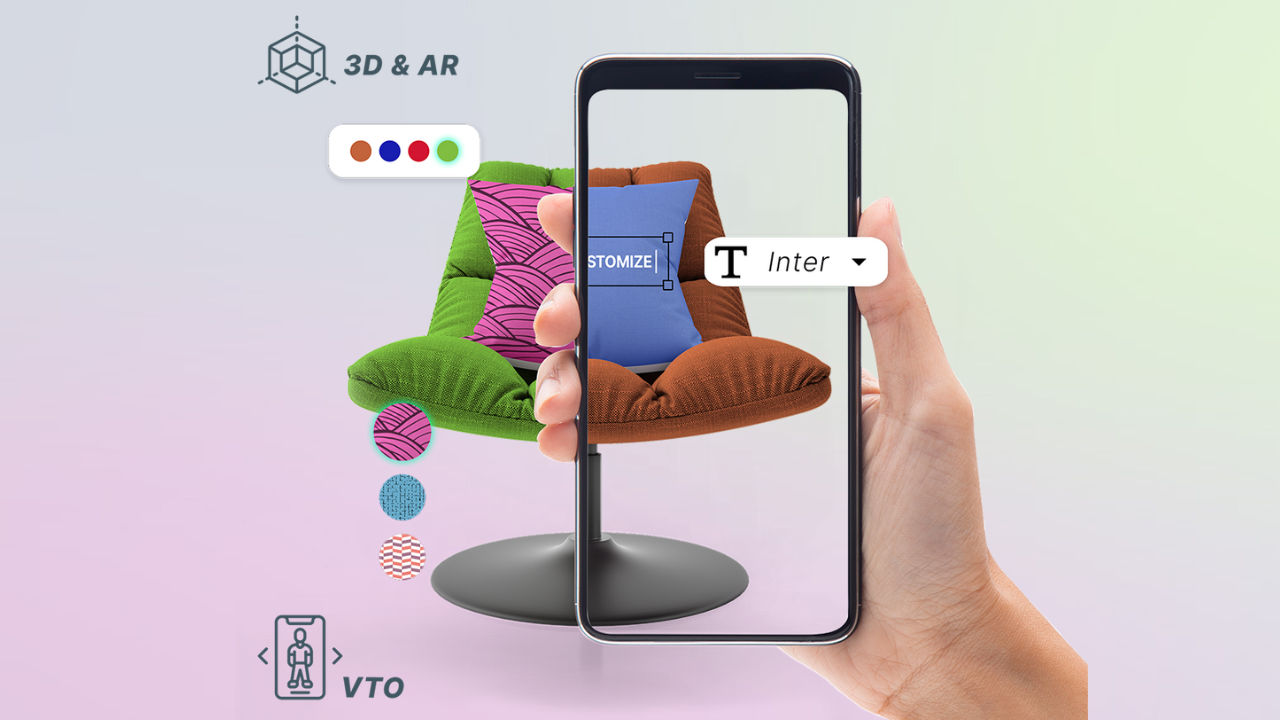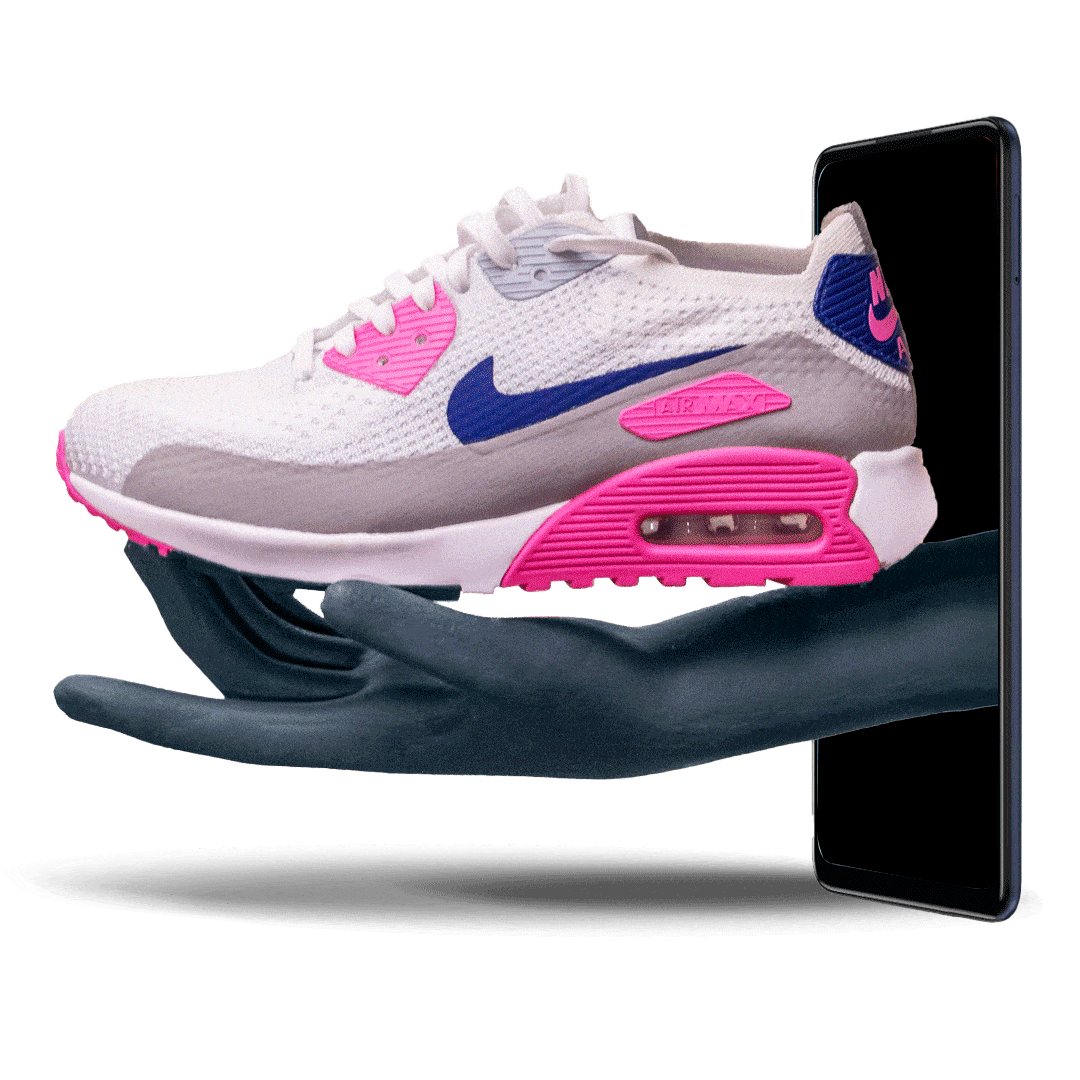Imagine living in a world where customers want to design their own products. Well, it’s here to stay! E-commerce and merchants need to adopt the right tools and technologies to answer the growing need for customized experiences. That’s where Product Configurators come into play!
3D Product Configurator can revolutionize the world of e-commerce. Whether you want to design furniture, a new car or customize a pair of sneakers, the possibilities are endless. Allowing customers to visualize the production process from start to finish in front of their eyes can pave the way for a brand-new level of customer satisfaction and brand affinity.
There are countless product configurator benefits. Let’s delve into the topic and discover what are the key 10 advantages associated with implementing product configuration in e-commerce (both for the consumer and the merchants).
10 Key Product Configurator Benefits For E-Store
Here are the 10 main reasons you have to consider implementing a 3D Product Configurator today:
#1. Higher Quality Products
3D custom-configured products almost always adhere to the highest level of production standards and quality. With so much input during the initial design process, the customer can create a product that complements their original demands and requirements. They are more likely to be satisfied with the final result and recommend the services of the company elsewhere.
This can lead to increased brand loyalty and greater customer relations over time. It can also trigger higher sales and a larger return on investment. A 3D Configurator also allows manufacturers to exhibit their product before it has been launched to generate interest and gain a sense of the collective needs and wants of their customer base.
#2. Engaging and Interactive Shopping Experience
Consumers respond to and are drawn to innovation and collaboration. Static images and text on social media and e-commerce sites today are considered the old way and the opportunity to do something different can attract inquisitive customers. This can increase the length of time they spend browsing the site and boost the likelihood of them placing an order.
With so many variations available, customers can spend hours constructing the perfect product to suit them. Brands have been competing to come up with the most innovative approach to 3D product configuration to sell their products for decades. Brands like Nike and Tesla are part of a growing number of brands that are choosing to harness the selling power of 3D configuration.
#3. Premium Brand Image, Increased Awareness
When it comes to Product Configurator benefits, we have to mention that this software significantly enhances a brand’s image by offering a sophisticated, interactive shopping experience that stands out in today’s competitive market. By implementing these technologies, brands can provide customers with a unique opportunity to visualize products in high detail and customize them according to their preferences, thereby fostering a deeper connection with the product and the brand.
This level of engagement not only elevates the customer’s perception of the brand as innovative and customer-focused but also positions the brand as a leader in leveraging cutting-edge technology for an enhanced shopping experience. Furthermore, the adoption of 3D configuration and technology is a strategic move that can set a brand apart, creating a premium brand image that resonates with tech-savvy consumers and elevates its status above competitors.
#4. No More Samples and Photoshoots
3D models and configurations offer a transformative solution for e-commerce by significantly reducing the reliance on physical samples and photoshoots. This technology enables customers to interact with a virtual representation of the product, allowing for an in-depth exploration of various customizations and features without the need for tangible prototypes.
Consequently, brands can showcase an extensive range of product variations without the logistical and financial burdens of producing multiple physical samples and organizing elaborate photoshoots. This shift not only streamlines the product development and marketing process but also accelerates the time-to-market for new products, enhancing the overall efficiency and scalability of online retail operations.
#5. More Sustainability, 100% Sell-Out
One of the most important Product Configurator benefits in e-commerce? Significantly contributing to sustainability and ensuring a 100% sell-out rate by aligning production directly with consumer demand. This approach eliminates the traditional practice of mass-producing items in anticipation of potential sales, which often leads to unsold stock and contributes to waste. Instead, products are only manufactured once they have been customized and ordered by the customer, ensuring that every item produced has a confirmed buyer.
This made-to-order model minimizes waste, reduces the environmental impact associated with overproduction, and supports a more sustainable retail ecosystem. Moreover, it empowers brands to operate more responsibly, fostering a positive brand image among increasingly environmentally conscious consumers.
#6. Measurable Customer Satisfaction
One of the main Product Configurator benefits is allowing consumers to find out what they want, helping manufacturers to determine what sells. This can lead to new and improved product launches. The opportunity to fully customize your product from start to finish can give companies the insight needed to implement these changes and measure their success.
By keeping up with customer demand, you can retain your existing customer base and increase your chances of reaching a wider pool of prospective customers over time. If a particular feature or preference proves popular, it may benefit the brand to incorporate it into a regular model lineup. Features or preferences that perform poorly can also be removed from inventory to save the company valuable time and money better spent elsewhere.
#7. Greater Customer Alignment
3D product configuration offers a 360-degree view of the product they are intending to purchase and may be the difference between them completing the sale and abandoning the site altogether. 3D product configuration also allows customers to monitor the cost of their design over time. Different design options and customizations can give customers the power to control what they pay and make changes as necessary during the entire production process.
#8. Reduced Marketing Costs
3D technology and configuration hold paramount importance in the realm of marketing, revolutionizing how brands create and distribute content across various channels. By leveraging 3D models, companies can generate high-quality, engaging assets that captivate audiences and enhance the online shopping experience. These assets, versatile across digital platforms – from websites to social media and beyond – enable consistent, immersive brand storytelling.
The ability to produce lifelike, interactive visuals not only aids in conveying the product’s value and features more effectively but also fosters a deeper consumer engagement. This innovative approach to content creation offers a competitive edge, ensuring that marketing campaigns stand out in a crowded digital landscape. Furthermore, the use of 3D assets streamlines content production, allowing for rapid adaptation to market trends and consumer preferences, thereby maximizing the impact of marketing efforts and driving higher conversion rates.
#9. Fewer Product Returns
Integrating 3D product configuration into e-commerce platforms plays a crucial role in reducing product returns. This technology offers customers an in-depth, customizable view of products, allowing them to understand precisely what they are purchasing. Customers can adjust colors, sizes, and designs, closely mirroring the in-store experience.
Such detailed previews ensure that expectations are more likely to be met upon delivery, significantly decreasing the likelihood of returns due to dissatisfaction or unmet expectations. This not only reduces the logistical and financial burdens associated with returns but also elevates customer satisfaction, fostering a more positive shopping experience and enhancing brand loyalty.
#10. Increased Customer Loyalty
If customers can design a product to suit their taste and budget, they are more likely to return and reuse your services. Customer satisfaction can lead to customer loyalty. If your customer is impressed with the service they have received, they are also more likely to recommend your brand to a friend.
This process can trigger a domino effect that can result in increased site traffic and larger profit margins. Great customer service can also have a dramatic impact on the relationship between the customer and the brand. With your undivided attention, they are unlikely to shop elsewhere.
Conclusion
3D product configuration can transform how you buy and sell products online.
Consumers can design a product that perfectly reflects their individual needs, budget, and requirements. It’s time for you to add a 3D product configurator to bring your business into the 21st century!
Interactivity and engagement are the keys to your brand standing out from the crowd and adapting to the future. By enjoying a 3D shopping experience from the comfort of their own home, consumers can harness their creativity and make decisions in record time.














